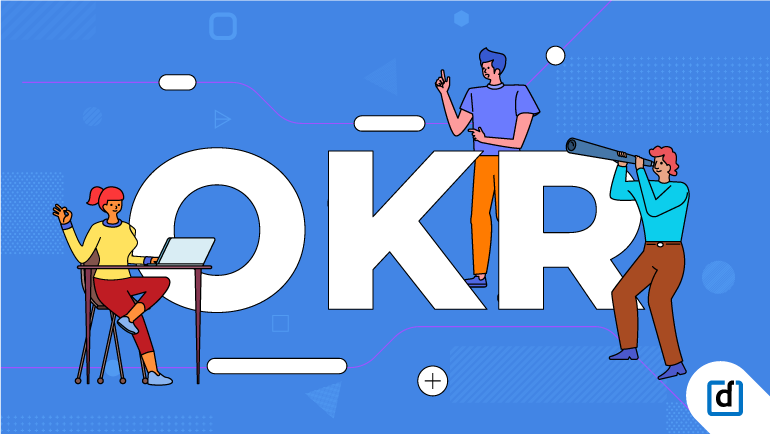

A McKinsey study released recently illustrated the Crisis Communication life cycle during the three stages viz Resolve, Resilience and Reform. As we stand at Resilience / Reform stages of COVID-19 crisis based on various organisations' responses, a clear need is drawn out to extend greater clarity on longer term and future plans in addition to the immediate expectations.
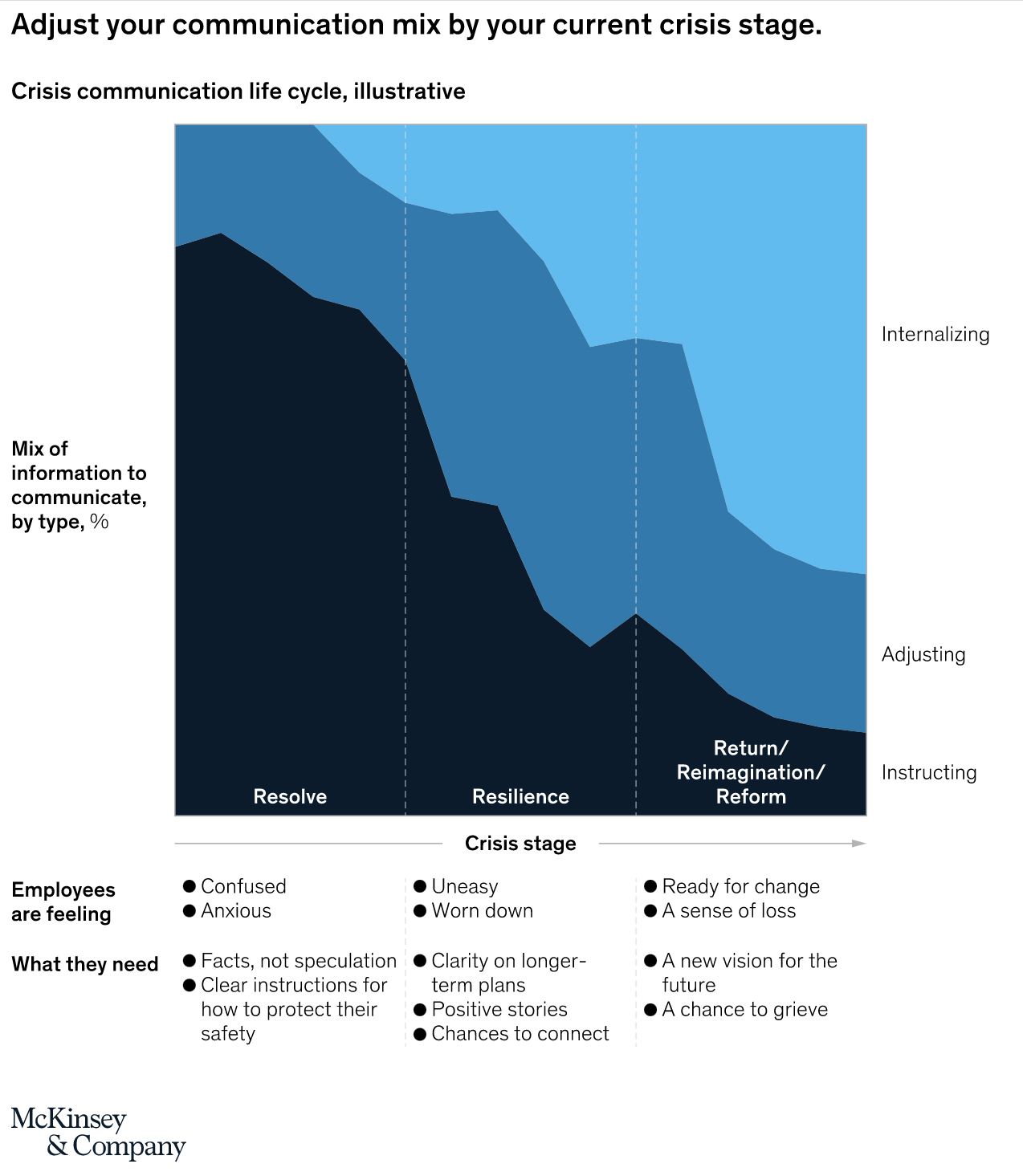
The Performance Management System is established as one of the most powerful mechanisms setting the organisational tone, vision and expectations from its members across levels if set right, contrary to the impact of traditional goal setting processes causing systemic problems of narrowed short term focus, decreased cooperation and decreased motivation at varying degrees in different scenarios. Looking at the study, this could be an appropriate moment to not only make the performance management system more effective but also align the communication and expectations during these unprecedented volatile times to the last person in the organisation.
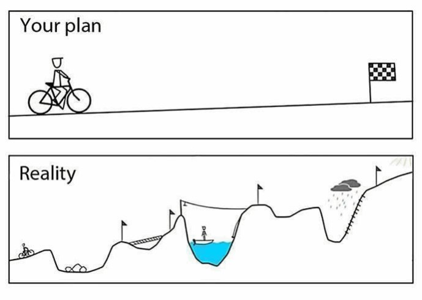
So, how can you make your performance management system more effective? Have you tried the OKR framework yet? We highly recommend that you do.
Let’s decode this fashionable new buzzword that has caught everyone’s attention and why it really works.
The OKR Methodology
The OKRs methodology is a system for setting, cascading and communicating goals throughout your organisation. OKRs bring focus because they make it easy for companies, departments, and teams to recognise what the current priorities are, and to align them to employees personal objectives.
An OKR has two main components:
1. OBJECTIVE
The objective is a qualitative description of ‘what’ you want to achieve. Objectives are aspirational and typically motivate the team to stretch beyond normal.
2. KEY RESULTS
Each objective has 3-5 key results. Each key result should define as to ‘How’ we will achieve the objective and measure progress toward success. They should not be tasks.
Some companies use what they call stretch goals. An example is Google, who set “stretch goals” so hard, that 70% completion is considered successful. The intention is to drive people towards achieving big gains.
Here’s an example of setting OKRs:
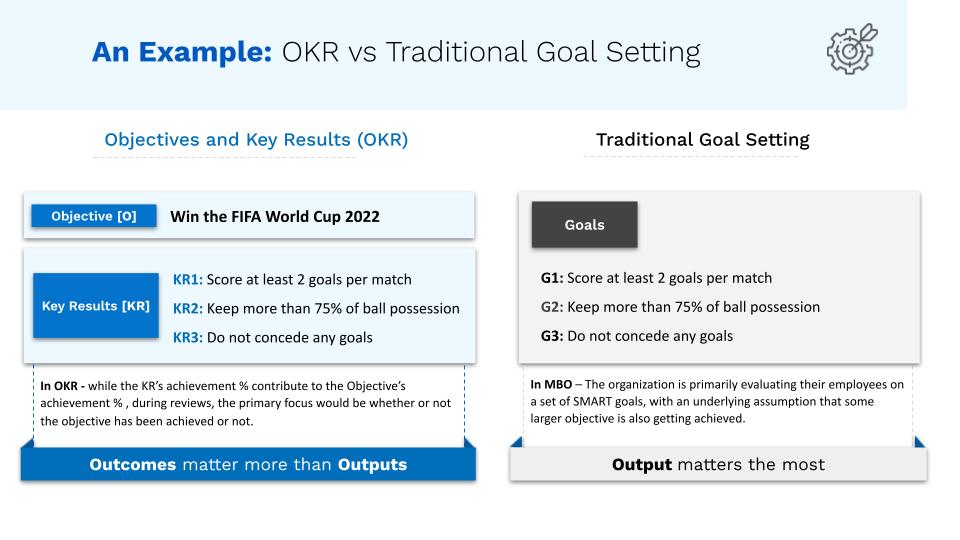
What’s so great about OKRs?
-
The actions match the org vision - While the Objectives are visionary and medium term, the Key Results are action oriented. The Objectives can cross over multiple performance cycles but the KRs remain specific to that cycle. Having only 3-5 Objectives fosters a culture of focussed priorities. Individuals can align their OKRs with the department goals and eventually the organisational goals through goal cascading. This gives clarity to employees about why their work is important.
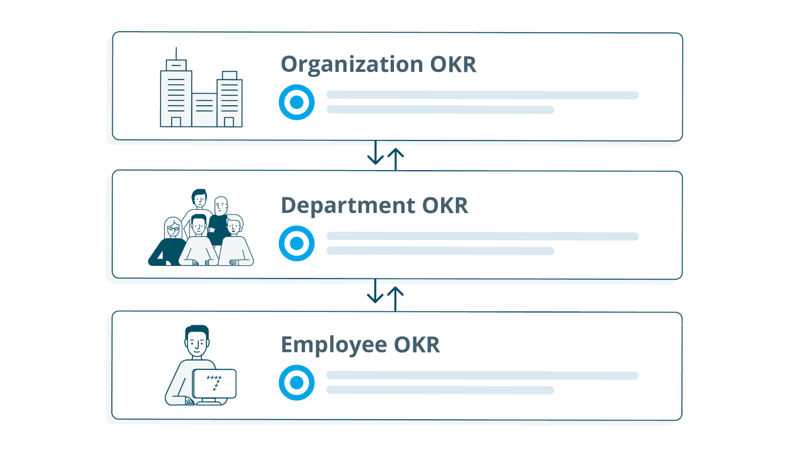
-
Greater transparency and collaboration - OKRs are public hence everyone knows what’s going on in their team and throughout the company as a whole. Linkage of their achievement with other functions or overall org is easy through true cascading. Transparency eliminates duplication of work and fosters a culture of ownership. OKRs empower employees to make decisions on their own, with context and reason.
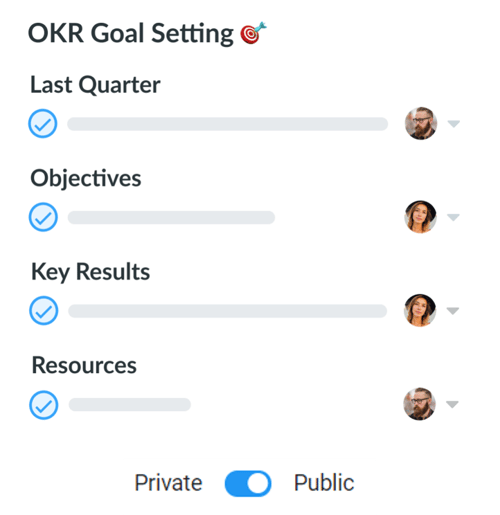
-
Real-time tracking - OKR progress is updated regularly, giving the entire company a sense of progress, and also visibility on roadblocks, as they occur. They provide easy mid-course recalibration of KR’s without impacting the Objectives.
-
Greater focus and commitment to priorities - OKRs create clarity and focus. Everyone has a small number of clearly defined objectives. This forces prioritization at all levels and leads to more disciplined efforts and initiatives.
-
Improved teamwork and employee engagement - The use of shared OKRs improves collaboration among different teams, solving interdependencies and unifying competing initiatives. Moreover, the OKR bottom-up approach for goal setting connects the employees with the company’s objectives, thereby increasing engagement.
-
Increased accountability - Teams receive a clear direction and are free to choose how to achieve their OKRs. They become responsible for their objectives, with clear success criteria known to the whole company, creating mutual obligations.
-
Fast paced, agile - OKRs are short-term goals, typically three months in length. This gives employees more chances to assess and improve at work, increasing innovation and reducing risks and waste. The system of continuous feedback further helps in quick course-correction.
-
Better results - Using short-term goals creates a culture where problems are solved quickly, and every contribution matters. This results in better and more consistent results.
-
Bolder goals - Decoupling OKRs from compensation and using stretch goals, even partially, enable the team to set ambitious, challenging goals.
What are the Benefits of OKR’s over other traditional systems?
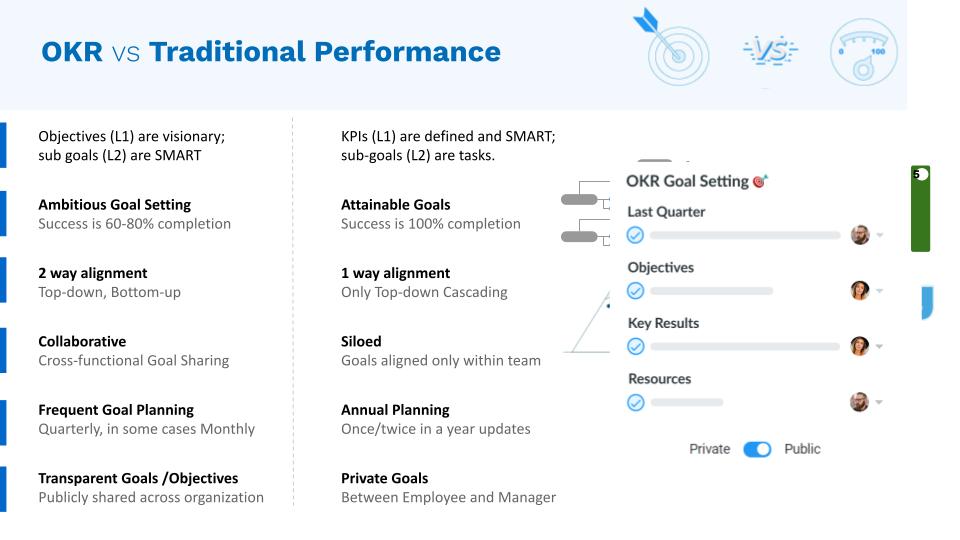 OKRs are a great way to empower your people to push their boundaries and build organisational agility. Especially as the world of work transforms rapidly. But as is with any transition, it is important to identify your change champions who can drive OKR adoption in your organisation. Planning, adopting and fine tuning of the adoption process could be your first plan of action.
OKRs are a great way to empower your people to push their boundaries and build organisational agility. Especially as the world of work transforms rapidly. But as is with any transition, it is important to identify your change champions who can drive OKR adoption in your organisation. Planning, adopting and fine tuning of the adoption process could be your first plan of action.
Thankfully with Darwinbox, this becomes easy. A single unified HCM allows for seamless data flow across the employee lifecycle. Being highly configurable and mobile-first, it drives higher user adoption. Complete with irresistible features like voice-to-text feedback, check-ins, continuous feedback, attrition prediction, talent search and suggestive nudges, OKRs on Darwinbox pack a punch!
“If you are someone who is in the middle of altering attitudes around performance as a philosophy and maybe considering introducing OKRs, then you are on the right track! And we want to give your efforts a leg up. Here's your OKR Starter Kit with best examples for different functions and a ready-to-use template to design your own OKRs.”



Speak Your Mind